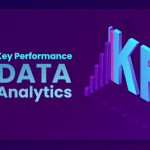In the ever-evolving landscape of data management and analysis, the marriage of Python and big data processing in the cloud represents a formidable synergy. This dynamic duo has redefined the way organizations collect, process, and glean insights from vast volumes of data. In this article, we delve into the profound impact of Python in the realm of big data processing in the cloud, shedding light on its capabilities, libraries, and real-world applications
The Era of Big Data
The digital age has ushered in an era where data reigns supreme. From e-commerce transactions and social media interactions to sensor data from IoT devices and scientific research, the volume, velocity, and variety of data have grown exponentially. The term “big data” encapsulates this data deluge, characterizing datasets so vast and complex that traditional data processing tools and methods fall short.
In this context, cloud computing has emerged as a linchpin for storing, processing, and analyzing big data. Cloud platforms like Amazon Web Services (AWS), Google Cloud Platform (GCP), and Microsoft Azure provide the scalability, flexibility, and cost-efficiency necessary to tackle big data challenges. However, harnessing the power of these clouds necessitates a tool that can seamlessly interface with them, and Python fits this role admirably.
Python: The Swiss Army Knife of Data Processing
Python’s ascendancy in the domain of big data processing is rooted in its versatility, robust libraries, and a vibrant developer community. As a high-level programming language, Python’s simplicity and readability make it accessible to a broad spectrum of users, from data scientists and engineers to business analysts. It has become the lingua franca of data processing and analysis, enabling users to focus on problem-solving rather than wrestling with intricate syntax. For organizations seeking to harness the power of Python in their data processing endeavors, hiring skilled Python developers is paramount. Explore your options at https://lemon.io/hire-python-developers/ to find top-notch Python talent for your data-driven projects.
Python Libraries for Big Data
1. Pandas: Pandas is a data manipulation and analysis library that provides data structures like DataFrames and Series. It is instrumental in data preprocessing tasks, making data ingestion, cleaning, and transformation intuitive.
2. NumPy: NumPy, short for Numerical Python, is the cornerstone of numerical and scientific computing in Python. It offers support for multi-dimensional arrays and a plethora of mathematical functions, essential for big data operations.
3. Dask: Dask extends Python’s capabilities to parallel and distributed computing. It allows users to scale their data processing tasks from a single machine to a cluster of machines seamlessly.
4. Apache Spark with PySpark: Apache Spark, a powerful big data processing framework, can be leveraged with PySpark, enabling distributed data processing and analysis at scale.
5. Apache Hadoop with Hadoop Streaming: Python’s simplicity is well-suited for working with Hadoop, the industry-standard for distributed data storage and processing. Hadoop Streaming allows Python scripts to interact with the Hadoop ecosystem.
6. TensorFlow and PyTorch: For deep learning and machine learning tasks, TensorFlow and PyTorch offer Python APIs, making it effortless to train and deploy models on big data.
Python’s Role in Data Pipelines
Python is not merely a tool for data analysis but an integral part of data pipelines. It can ingest data from various sources, cleanse and preprocess it, and then feed it into machine learning models or analytics tools. The ease of integrating Python scripts into data pipelines simplifies the orchestration of complex data workflows.
Python and Cloud: A Symbiotic Relationship
Python’s compatibility with cloud platforms catalyzes the synergy between big data processing and cloud computing. Cloud providers offer services like AWS Elastic MapReduce (EMR), GCP Dataflow, and Azure HDInsight that seamlessly integrate with Python, empowering users to harness the full potential of cloud-based big data processing.
Scalability and Flexibility
Cloud platforms provide elastic scalability, allowing users to scale resources up or down as needed. Python’s ability to distribute tasks across clusters of machines is in perfect harmony with this cloud feature. This scalability is pivotal for handling large datasets and computationally intensive tasks.
Cost-Efficiency
The pay-as-you-go model of cloud computing aligns with Python’s cost-efficiency. Users can provision resources when required and shut them down when not in use, optimizing costs. Python’s open-source nature ensures that there are no licensing fees, making it an economical choice for big data projects.
Integration with Cloud Services
Python interfaces seamlessly with various cloud services. Users can interact with cloud storage, databases, and analytics tools using Python libraries and APIs, streamlining data access and analysis.
Real-World Applications
The marriage of Python, big data, and cloud computing is not confined to theoretical synergy; it is vividly manifest in real-world applications across diverse domains.
1. E-commerce and Recommendation Systems
Leading e-commerce platforms employ Python for processing and analyzing customer data to deliver personalized product recommendations. Python’s libraries aid in collaborative filtering, content-based filtering, and machine learning algorithms to enhance the shopping experience.
2. Healthcare and Genomic Data Analysis
In the field of healthcare, Python is instrumental in genomic data analysis. Researchers leverage Python to process massive genomic datasets, identifying patterns, mutations, and potential treatments for genetic diseases.
3. Finance and Risk Assessment
Python’s role in financial analytics is profound. Banks and financial institutions utilize Python for risk assessment, fraud detection, and algorithmic trading. Its ability to handle vast datasets in real-time is invaluable in the finance sector.
4. Environmental Monitoring and Climate Research
Python is indispensable in environmental monitoring and climate research. Scientists use Python to process and analyze data from satellites, weather stations, and climate models, aiding in climate change research and prediction.
5. Social Media Analytics
Social media platforms generate enormous amounts of data daily. Python enables businesses to extract insights from this data, including sentiment analysis, user behavior modeling, and trend prediction.
6. Autonomous Vehicles and Sensor Data
In the realm of autonomous vehicles, Python is utilized for processing sensor data from cameras, LIDAR, and radar systems. Real-time analysis of this data is crucial for safe and efficient autonomous navigation.
Challenges and Considerations
While Python’s synergy with big data processing in the cloud is powerful, it is not without challenges:
1. Performance Considerations
Python, being an interpreted language, may not be as performant as lower-level languages like C++ for certain computational tasks. Users must optimize code and leverage libraries like NumPy to mitigate performance bottlenecks.
2. Data Security and Privacy
Handling sensitive data in the cloud requires robust security measures. Python developers must be vigilant in implementing encryption, access controls, and data protection protocols.
3. Data Transfer Costs
Transferring large volumes of data between cloud storage and processing clusters can incur data transfer costs. Efficient data management strategies are essential to control expenses.
Conclusion
The convergence of Python, big data processing, and cloud computing has ushered in a new era of data-driven innovation. Python’s versatility, rich libraries, and compatibility with cloud platforms empower organizations to unlock insights from massive datasets, driving advancements across industries. From healthcare to finance, from autonomous vehicles to climate research, Python’s influence on big data processing in the cloud is transformative. As data continues to burgeon in volume and complexity, Python remains an indomitable force at the forefront of data analytics and processing, catalyzing innovation and redefining the boundaries of what is possible in the world of data-driven decision-making.








